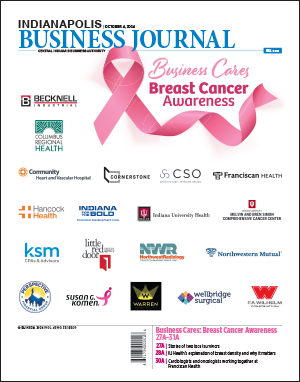
Welcome to IBJ's 2024 “Business Cares: Breast Cancer Awareness” microsite.
Breast cancer treatment is always evolving. So is survivorship—the process of guarding against recurrence. That's just one of the topics we cover in this year's “Business Cares: Breast Cancer Awareness” section and on this microsite. Here are the other topics you can read about as part of our annual effort to spread the word about breast cancer prevention, detection, treatment and survival:
- The stories of two local survivors—one of whom was diagnosed in her early 30s—and how their diagnoses changed their lives.
- IU Health's explanation of breast density, why it matters, and the new law that will make patients more aware of it.
- Advancements in how cardiologists and oncologists are working together at Franciscan Health to make sure heart health is top of mind for women being treated for breast cancer.
- An invitation for black women to participate in Komen's ShareforCures program, which aims to boost the representation of black women in breast cancer research.
- A calendar of breast cancer-related events and promotions throughout the month of October.
Thanks to the 19 companies and organizations listed below that sponsored this important section of IBJ. Their investment will fund a Breast Cancer awareness campaign throughout the month of October via print, digital and e-newsletter platforms.
And thanks to our readers. We hope you'll support our sponsors as they join all of us in working to improve awareness and treatment of breast cancer.
Sincerely,

Nate Feltman
Publisher, President & CEO
- Becknell Industrial
- Columbus Regional Health
- Community Health Network
- Cornerstone
- CSO
- F.A. Wilhelm
- Franciscan Health
- Hancock Health
- IEDC
- Indiana University Health
- IU Melvin and Bren Simon Comprehensive Cancer Center
- Katz Sapper Miller
- Little Red Door Cancer Agency
- Northwest Radiology
- Northwestern Mutual
- Perspective Financial Group
- Susan G Komen
- Warren Center for Performing Arts
- Wellbridge Surgical
Breast Cancer Events in Indy
Susan G. Komen Indianapolis MORE THAN PINK Walk
Saturday, October 5
Historic Military Park at White River State Park, 601 W. New York St.
Indianapolis.
Registration details at
www.komen.org/indianapoliswalk. Bringing together breast cancer survivors, supporters and advocates,
this year's Walk is not just an event; it is a pivotal moment to
secure vital funds that will make equitable care available to all. Funds
raised at the Walk will allow Komen to meet the immediate needs of breast
cancer patients through its free Breast Care Helpline and offer services
such as patient navigation, financial assistance and emotional support.
POUND for Pink Workout and Vendor Fair
Saturday, October 12, 11 AM to 4 PM
1537 Grand Avenue New Castle, IN 47362.
Vendor event 11 am – 4 pm, POUND Master class at 1:30pm, Food truck, DJ,
Raffles, Door prizes, & a silent auction!! Proceeds to the IWIN
Foundation.
Beauty for the Cure
Tuesday, October 8, 9:30 AM to 8 PM
Aveda, 2208 E. 116th St., Carmel.
Express services and proceeds and tips go to Indiana Women in Need
Foundation. Tips go to IWIN all month long.
Coffee for the Cure
Friday, October 18, 5 AM to 9 PM
The Human Bean, 5405 N. Keystone Ave., Indianapolis.
All proceeds go to Indiana Women in Need Foundation.
5th Annual Champions Day
Saturday, October 26, 12 PM
Horseshoe Indianapolis, 4300 N. Michigan Road, Shelbyville.
Give $10, get $10 promotion, with proceeds going to Indiana Women in Need
Foundation.
Ball in Pink Clinic with M14 Hoops
Sunday, October 27, 6 PM to 9 PM
Mojo Up Sports Complex at Finch Creek, 16289 Boden Road, Noblesville.
3-12 grade boys and girls basketball clinic supporting the Indiana Women
in Need Foundation.
F45 Workouts
Every Wednesday and Saturday in October, beginning October 5
F45 Northeast Carmel, 14570 River Road, Suite 135, Carmel.
Free drop in for anyone wearing pink. F45 will donate $5 per person to
Indiana Women in Need Foundation.
Draft Donations
October through December
10-56 Brewing and Catering, 2120 S. US Highway 35, Knox.
Five cents of every draft purchased during the last quarter of the year
goes to Indiana Women in Need Foundation.
Cleaning for a Cause with Glorious Cleaning
The month of October
Glorious Cleaning services available in Indy, Carmel, Fishers, Geist,
Lebanon, Noblesville, Westfield, Whitestown, and Zionsville. Five percent
of all proceeds from cleaning services donated to Indiana Women in Need
Foundation.
Paddle with a Purpose with Onyx Pickleball
The month of October
A portion of pink equipment proceeds donated to Indiana Women in Need
Foundation.
Jammin' with The Janeways
Tuesday, October 1, 6 PM to 9 PM
Northside Events and Social Club, 3100 E. 71st St., Indianapolis.
Benefit concert and private auction, with all proceeds donated to Indiana
Women in Need Foundation.
Shoe Sensation
The month of October
Shoe Sensation, 1672 S. Ohio St., Martinsville.
Promoting Indiana Women in Need Foundation at register checkout.
A journey that changed me forever
By Sara McInerney-Hauck
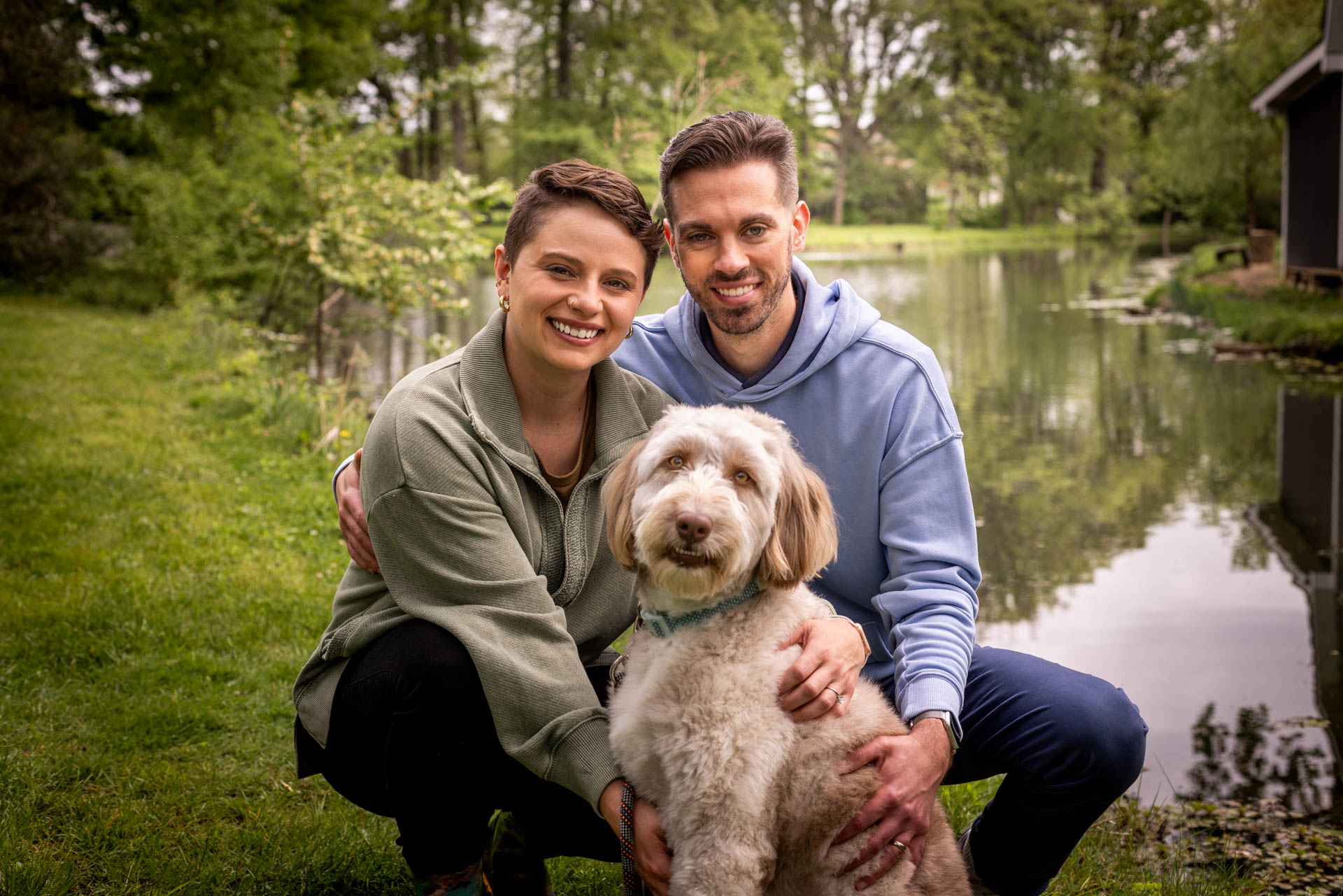
Photos courtesy of Community Health Network.
In 2021, I was joyfully skipping through the game of life with my husband. At that time, Jacob and I had been together for a decade after meeting sophomore year at Ball State University. We had just come off the high of celebrating our wedding, we bought our first home, I got a new job and we both turned 30 that summer.
As we advanced through major life milestones, our two-dimensional game board suddenly turned three-dimensional when our next step forward felt like falling through a trapdoor. We plummeted through shock and darkness and hit rock bottom when I was diagnosed with breast cancer. Talk about falling from the precipice of health! Just a year earlier, I had completed the Monumental Marathon and felt like I was at the top of my game in all aspects of life. Until now.
While I was diagnosed with a survivable cancer, it still came at a steep cost. I traded in my natural breasts for silicon, lost all my hair and now take medications that make living in my once extremely athletic and healthy body an uncomfortable experience on an everyday basis. I have bone pain like I'm in my 80s and deal with waves of fatigue that interrupt the simplest tasks. Even worse, my sense of self was rocked to the core.
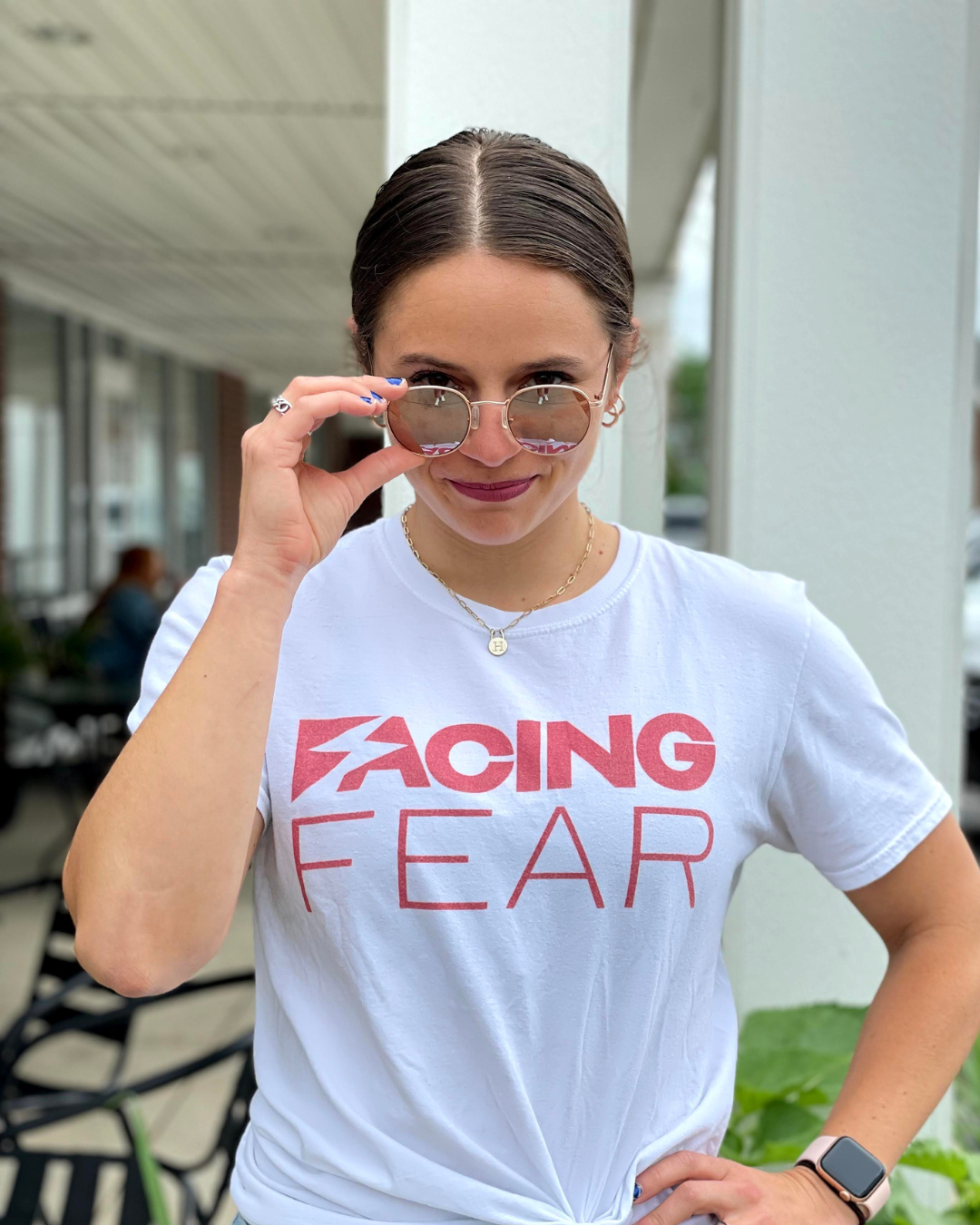
Like an IndyCar driver, I sped through treatment after treatment while successfully navigating most oncoming side effects. Luckily, my pit crew was made up of family, friends, a care team and acquaintances-turned-supporters who lined the track with high fives, cards and enough donations to get Jacob and me through the first year without any medical debt. I saved every card and fit them into an overflowing pink binder. I often refer to them as I continue to face the struggles of adjusting to life after cancer. Cards with phrases like, “Keep going, future you will be so proud!” remind me how far I've come, how loved I am and that I completed the race.
While each cancer journey is unique with many variables, my journey had one consistency: the level of care I received at Community Health Network MD Anderson Cancer Center. What started with asking my physician to check a lump I found to ringing the bell for my final treatment, Community MD Anderson was there every step on my road to remission. As many times as I've dreaded walking up to that building for another round of treatment, I've walked out feeling relieved and at peace thanks to my care team. Not once did my oncologist or anyone on the team, whether it was a scheduler, nurse or technician, have one foot out of the door. They stayed beyond appointment times, listened and have always gone above and beyond to relieve my worries.
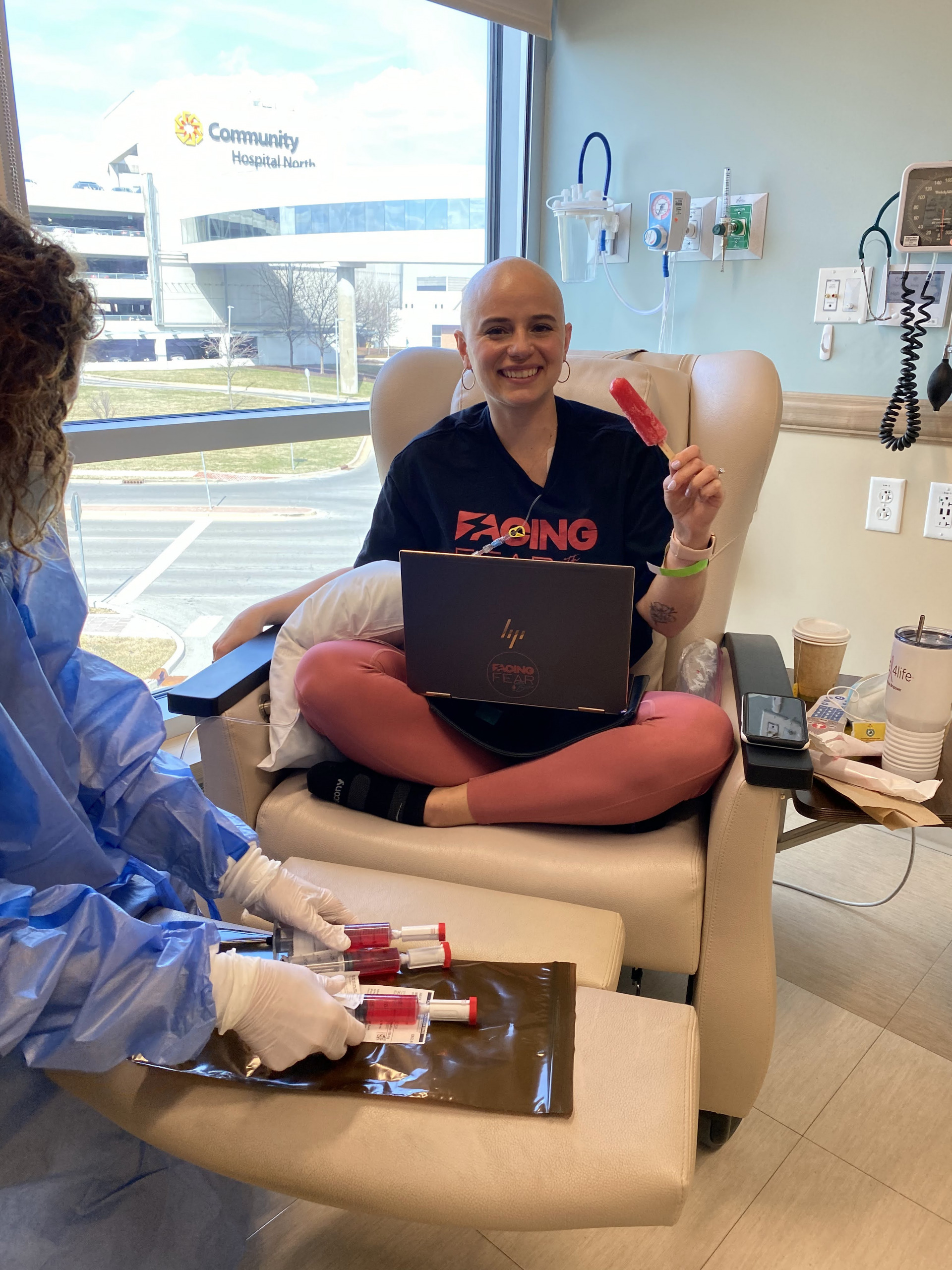
As I've transitioned from a patient in active treatment to a cancer survivor over the past two years, I've reflected and made changes to my priorities. I've followed passion over paycheck by accepting a nonprofit executive director role. I've published my first book, become an expert at saying “no” to anything I don't want to do and I'm much easier going. With all these positive changes, I'm still mourning the woman and health I had before my diagnosis. My heart breaks knowing I'll never be like her again, yet I continue to patch up my cracks with sparkling gold knowing I got a second lease on life.
Let my story serve as a reminder that you are the CEO of your health. I encourage you to consume with intention and be proactive when it comes to self-exams, annual checkups and routine scans. If you ever find yourself with a life-threatening illness like I did, please know you are not alone. You're courageous enough to advocate for yourself, ask questions, take notes and get the care you deserve.
As October approaches, it's a month that means a lot to me. With pink ribbons popping up everywhere, I'm reminded of a journey that changed me forever.
A story of early detection and resilience
By Ashley Noonan
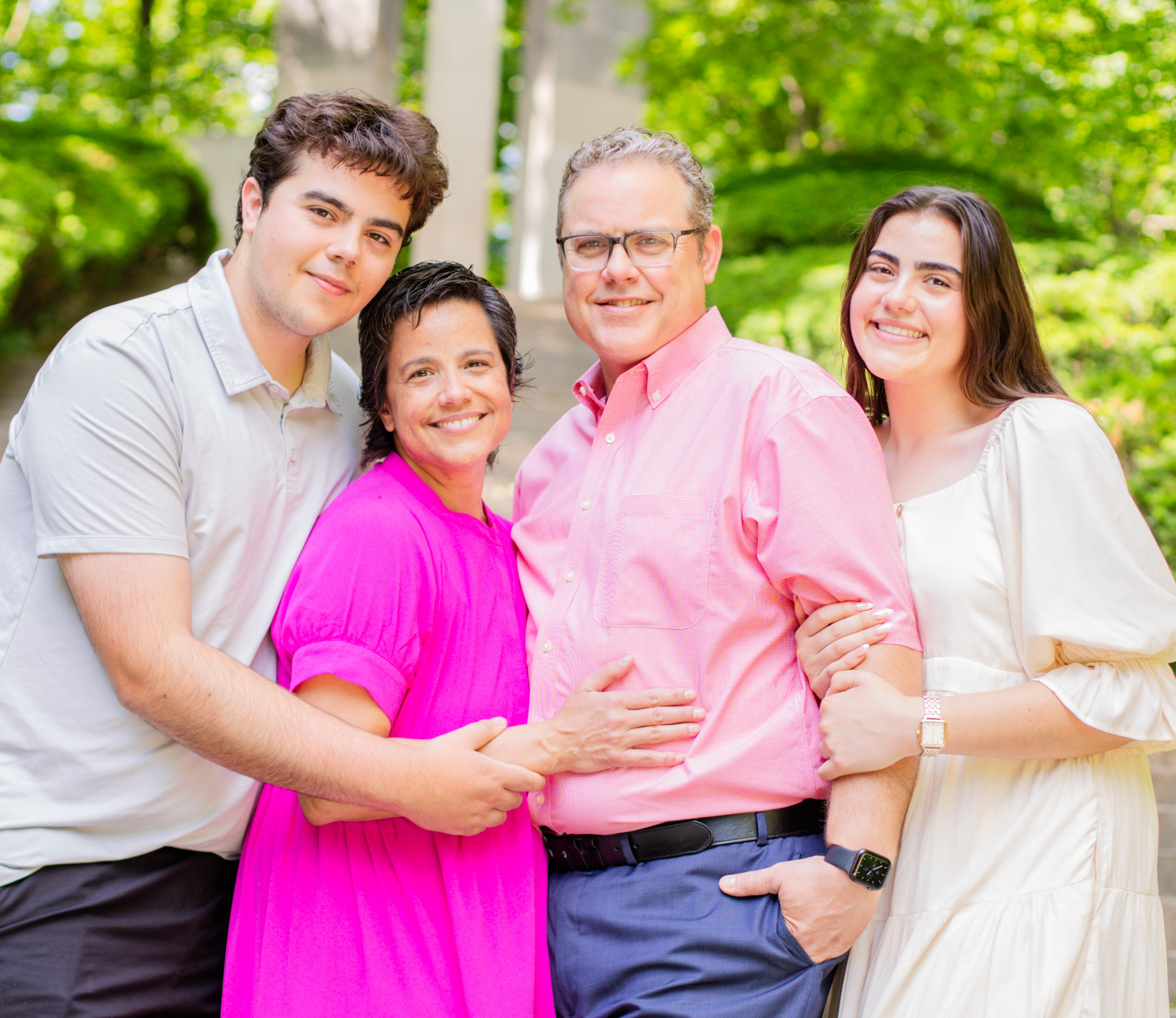
In April of 2023, Teresa Bryan's life took an unexpected turn. What began as a routine mammogram evolved into a life-altering journey when she received a breast cancer diagnosis. For the 46-year-old, who was otherwise healthy and active, the news was both shocking and disorienting.
“Breast cancer did not run in my immediate family, and honestly, I was in disbelief. I thought, ‘This happens to other people, not me,’” Teresa said.
Teresa's life was already full: She was managing a career, pastoring a local church with her husband, raising two high school-aged children and caring for three rescue dogs. And Teresa and her husband, Tim, prioritized self-care by hiking several times a week.
The gravity of Teresa's diagnosis hit her hard as she sat in her doctor's office after a series of follow-up tests. Fortunately, she had the support of a nurse navigator at Hendricks Regional Health, who introduced her to the American Cancer Society's resources.
“Until then, I had little knowledge of ACS's support services. Cancer had never been a consideration in my life. But throughout my treatment, ACS became a vital resource, providing crucial information and support that helped me navigate my diagnosis and treatment.”
The whirlwind of cancer treatment quickly consumed Teresa's schedule. From ports and chemotherapy to MRIs and bone scans, her calendar quickly filled with appointments.
“Cancer didn't care about my existing responsibilities,” Teresa said. “When I accepted that cancer had chosen me, the fight was on.”
Teresa and her care team developed a treatment plan that included chemotherapy, a double mastectomy, radiation, reconstruction, and adjuvant therapies. Despite the challenges, Teresa was determined not to let cancer overshadow the people and moments she valued.
Two weeks before her daughter's high school graduation, Teresa started chemotherapy. The treatment made her extremely ill, landing her in the emergency room on the day of her daughter's graduation ceremony. Determined not to miss this important moment, she made it in time to see her walk across the stage and receive her diploma with just minutes to spare.
Teresa is now in the “survivorship phase” of her journey. Currently, she is now completing adjuvant therapy, which are treatments that reduce the chance of the cancer returning.
She credits early detection, thanks to her routine mammogram, as a critical step that has allowed her to beat breast cancer. Because of this, she is an advocate for those she loves to make their health a priority and get screened.
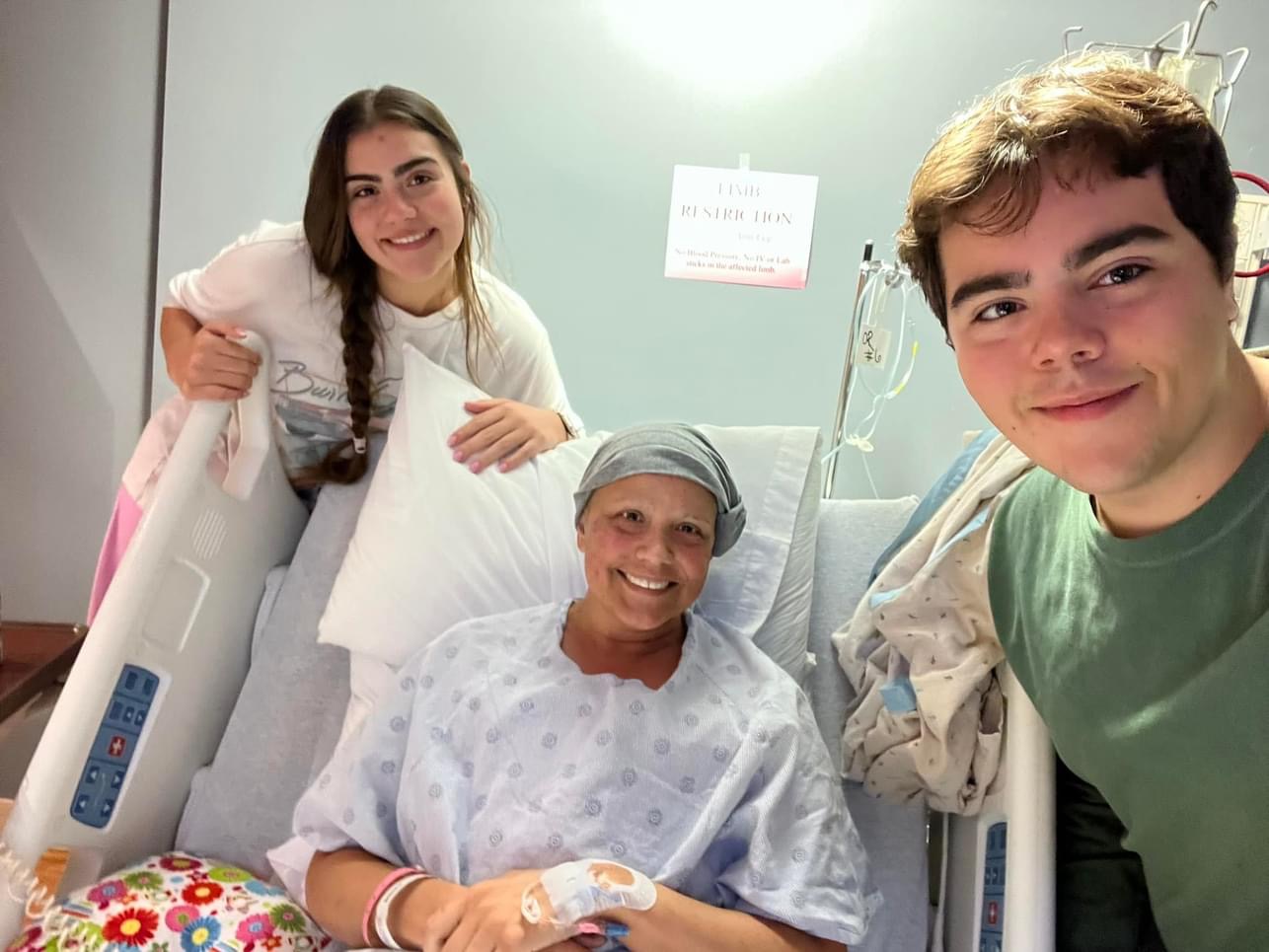
“I am profoundly grateful for the unwavering support of my family, friends, faith community and work colleagues as well as the dedicated care team at Hendricks Regional Health,” said Teresa. “ACS's advocacy, research, and patient support programs have significantly impacted my ability to cope and continue fighting.”
Teresa hopes her story underscores the importance of regular cancer screening and inspires others to take proactive steps in their health. Early detection remains one of the most powerful tools in the fight against breast cancer.
Understanding breast density: Why it matters in screening mammograms
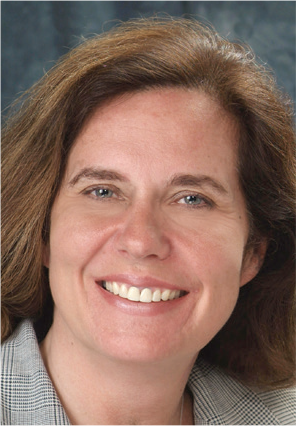
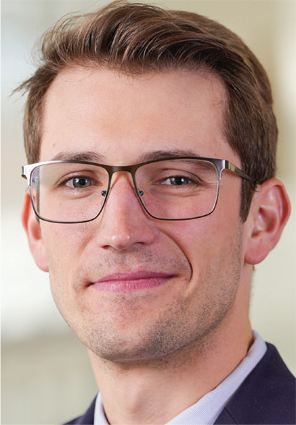
By Dr. Colleen Madden and John Salvas
As we enter Breast Cancer Awareness Month, hundreds of Indiana women will be scheduling their screening mammography appointments. Screening mammograms are crucial to early detection and treatment of breast cancer. In fact, mammography has helped reduce breast cancer mortality in the U.S. by nearly 40% since 1990, according to the American College of Radiology.
Among various factors that influence the effectiveness of mammography is breast density. Dense breasts are associated with an elevated risk of developing breast cancer, in part because dense breast tissue can make it difficult for doctors to see abnormal growths, via mammogram, that could be cancer. With the recent signing of Indiana House Bill 1058, fortunately, patients will see a change in notification language regarding their breast density. The new language will help women make more informed decisions about their breast health.
What is Breast Density?
All breasts are not the same. Breasts are made of fat and breast tissue. Breast tissue is comprised of glandular tissue, which is involved in milk production, and fibrous tissue, which provides support for the breasts. Fatty tissue surrounds and cushions the glandular and fibrous tissues of the breast. When there is more glandular or fibrous tissue compared to fatty tissue, the breast is considered dense. The variable amount of each tissue type contributes to different breast densities.
Why Does Breast Density Matter?
On a mammogram, dense breasts with a large proportion of glandular and/or fibrous tissue appear white, while fatty tissue appears dark. Since breast masses appear white on mammograms, a suspicious mass may be hidden by dense breast tissue. As a result, women with dense breasts may have a higher chance of false negatives – where cancer is present, but not detected.
Dense breast tissue is also associated with an increased risk of developing breast cancer. Women with extremely dense breast tissue have a 4 to 5 times greater risk of developing breast cancer compared to women who do not have dense breast tissue.
Due to the limitations of mammography in dense breasts, your health care provider may recommend other advanced supplemental imaging options to provide the best chance at early detection of any abnormality. This could include an ultrasound, as this technique uses a probe on the skin of the whole breast to obtain images of the breast tissue, which can help detect abnormalities that mammograms might miss.
Your provider may also recommend Magnetic Resonance Imaging, commonly known as MRI. MRI scans provide the highest sensitivity to detect breast cancer. However, they include an IV contrast injection and are more expensive than other imaging modalities.
How Is Breast Density Determined?
Breast density is determined by the radiologist who reads your mammogram and classifies the density into one of four categories. The assessment of the patient's breast tissue density must be provided in a report to the referring provider using the specified classification system below, which is now required by state law – HB1058 and federal law (Mammography Quality Standards Act revised 03/10/3023, effective 09/10/2024).
- Almost entirely fatty: The breasts are almost entirely fatty.
- Scattered fibroglandular densities: There are scattered areas of fibroglandular density.
- Heterogeneously dense: The breasts are heterogeneously dense, which could obscure small masses.
- Extremely dense: The breasts are extremely dense, which lowers the sensitivity to mammography.
All patients will receive one of two breast density summaries as outlined by state and federal law:
Dense Breast Tissue: “Breast tissue can be either dense or not dense. Dense tissue makes it harder to find breast cancer on a mammogram and also raises the risk of developing breast cancer. Your breast tissue is dense. In some people with dense tissue, other imaging tests in addition to a mammogram may help find cancers. Talk to your health provider about breast density, risks for breast cancer, and your individual situation.
Not Dense Breast Tissue: “Breast tissue can be either dense or not dense. Dense tissue makes it harder to find breast cancer on a mammogram and also raises the risk of developing breast cancer. Your breast tissue is not dense. Talk to your health provider about breast density, risks for breast cancer, and your individual situation.”
What Should You Do if You Have Dense Breasts?
It is important to talk with your health care provider if your mammographic report indicates that you have dense breasts. Depending on each patient, your healthcare provider may recommend additional imaging with screening ultrasound or screening breast MRI.
Breast density is a critical factor in breast cancer screening that can influence the effectiveness of mammograms. With new state and federal laws, it's imperative to understand the implications of breast density to develop a personalized screening plan designed to maximize early detection and overall breast health.
Madden is a breast imaging radiologist and division chief of breast imaging at Indiana University School of Medicine and Indiana University Health. Salvas is a second-year medical student at Indiana University School of Medicine
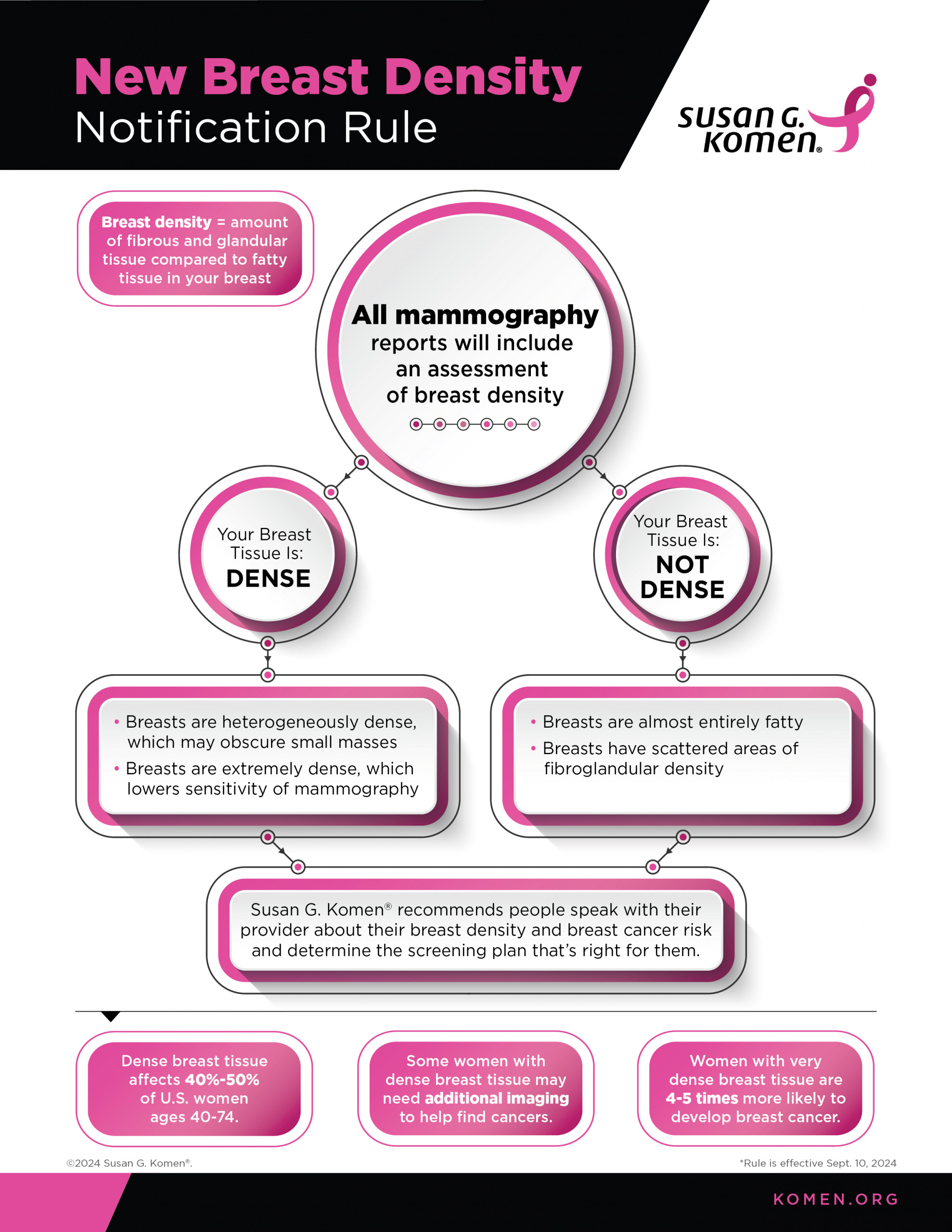
Breast cancer survivorship
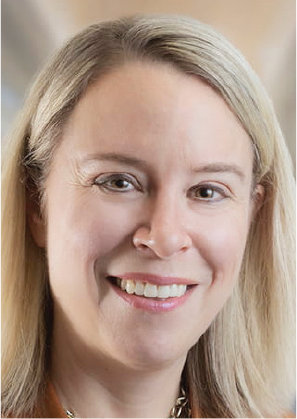
By Dr. Erica M. Giblin
Cancer of the breast is one of the most heavily researched areas in oncology. Because of research, and thanks to the scores of women who have selflessly participated in clinical trials, improvements in technology and medicine to identify and cure breast cancer are moving at a breathtaking pace.
We now have 3D mammograms, breast MRI and contrast-enhanced mammography, to name a few, that have helped improve detection of breast cancer.
The ways in which surgeons are removing small breast lesions have changed as well. The “wire” is going by the wayside, with surgeons instead using small localization chips to guide them to the area of concern during surgery. Meanwhile, medications used to treat breast cancer are becoming even more nuanced and targeted to the subtype of breast cancer.
Once patients have completed treatment of breast cancer, they then enter survivorship.
But what exactly is survivorship? The basic tenets are to follow the patient with clinical exams and imaging to surveille for recurrence of breast cancer. Recurrence is relatively uncommon but is something that patients often worry about after completing their breast cancer therapy.
Breast imaging in survivorship can be a simple yearly mammogram or it can include breast MRI—particularly for patients with dense breast tissue. Whole body scanning, like PET and CT, is typically used at the discretion of the medical oncologist if there is a higher level of concern for recurrence by the medical providers, based on the stage of breast cancer (i.e., if lymph nodes are involved and/or if the tumor was very large).
Another important component of survivorship is nutrition.
We are what we eat, and our overall health is dependent on what we eat. A diet high in protein that incorporates lots of vegetables, such as the Mediterranean diet, is associated with multiple health benefits. Likewise, cutting down on processed foods, carbs and sugars helps decrease obesity—and that can indirectly help decrease cancer risk. At the micro level, there is an intense focus on investigating the “gut microbiome”—the bacteria or microbes in the stomach that may lead to or prevent cancer. And diet influences whether there are good microbes or bad microbes in the gut.
But are there any other tests outside of breast exam, mammogram, breast MRI and ultrasound that can help detect if a breast cancer recurrence is happening? There is intense ongoing research underway to determine if circulating tumor cells (ctDNA) can be used to surveille for recurrence in survivorship.
Basically, the premise is this: Each patient’s tumor is analyzed for a set of unique mutations, and then the patient’s blood is analyzed to see if fragments of these specific circulating tumor cells are present. The blood is analyzed on a routine basis as per discussion between the medical provider and patient (i.e., blood draw every 12 weeks or every 6 months or once a year). This is called a molecular residual disease, or MRD, assay. This type of technology is new, so some centers and medical practices may be using it and some may not be using it yet as they are waiting for more research to validate this type of monitoring. Regardless, this is an exciting new avenue for survivorship as it introduces another way to follow patients for recurrence of breast cancer outside of imaging. We may now be able to also follow along looking for recurrence in the blood.
As noted above, the field of breast cancer, including imaging diagnosis, surgical therapy, medicinal therapy, and survivorship, continues to evolve on a continual basis. Such evolution brings patients closer and closer to truly personalized care for their unique breast cancer.
Giblin is medical director of breast care services at Ascension St. Vincent.
Prevention
There is no sure way to prevent breast cancer, and some risk factors can’t be changed, such as being born female, age, personal or family history of the disease, and inherited gene changes. But there are things a person can do that can help lower the risk for breast cancer. Avoiding or limited alcohol, getting regular physical activity, and getting to and staying at a healthy weight might help lower risk.
If you have a famiy history or inherited gene changes, your health care provider may have you see a genetic counselor or recommend certain medicines or procedures. They can help you better understand your risks and make informed decisions about your care.
Cardio-oncology: Saving hearts while curing cancer
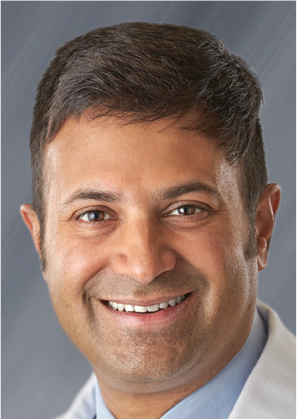
By Dr. Vijay Rao
Seven years ago, Franciscan Health committed to creating a comprehensive program to provide care to patients with cancer and pre-existing cardiovascular disease or those receiving cancer treatments with the potential for cardiovascular toxicity. There was a growing recognition that chemotherapy and radiation treatments were responsible for both short and long-term cardiovascular complications. Patients surviving their cancer diagnosis were developing premature cardiovascular disease. The field of cardio-oncology has come a long way since the early days; there are now international guidelines and quality metrics are being developed for the field with an emphasis on the best overall outcomes for patients.
Within the field of cardio-oncology, breast cancer patients pose unique challenges. First, cardiovascular risk factors such as obesity/sleep apnea, tobacco abuse and high blood pressure are prevalent in this population and are often not fully optimized. Additionally, prior to menopause, women have significantly less cardiovascular disease than men; however, after menopause, their risk of heart disease increases to roughly the same level as men. One theory to explain this is because of the drop in estrogen levels that seemed to have been providing cardiovascular protection. Coincidentally, breast cancer detection among women also rises after menopause. In other words, as a woman's risk for cancer increases, so too does her risk of heart disease. Second, treatment options such as HER-2 targeted therapies (trastuzumab as an example) can have real-time impacts on heart pump function. Lastly, radiation treatments (particularly of the left breast, as the heart lies directly behind the left breast) can lead to long-term effects such as premature coronary atherosclerosis.
Fortunately, today's protocols for early detection of cardiac toxicity result in fewer cardiac complications during cancer treatment. In our clinic model at Franciscan Health, nurse navigators are the first touchpoint in the patient's journey by screening the incoming census of patients and utilizing a cardiotoxicity risk score (patient baseline cardiovascular risk factors in conjunction with the toxicity risk of the chemotherapy being given) to triage which patients would stand to benefit from a referral to our cardio-oncology clinic. Patients may be prescribed cholesterol or blood-pressure-lowering medications to provide protection to the heart during cancer treatment. Routine testing, such as periodic ultrasounds of the heart (echocardiograms), are added to the patient's treatment plan as deemed necessary. When changes in heart function are detected, cancer treatments may be adjusted or other medications prescribed so that life-saving cancer treatments can continue.
In addition to clinic care, the Franciscan Cardio-Oncology program is actively engaged in both research and education in the field. We are among 100 sites around the world that are enrolling patients in a Global CardioOncology Research breast cancer registry with the goal of learning more about cardiovascular toxicity in this population. We also started and have been running the Indianapolis CardioOncology Network clinical case conference with other major health systems in Indianapolis to discuss challenging clinical cases and share best practices. For our efforts in the field, in 2022, Franciscan Health was named a Gold Center of Excellence by the International Cardio-Oncology Society.
We have now managed more than 5,000 office visits for patients in our cardio-oncology program, some of those being virtual appointments—a great option for immunocompromised patients. Two new Franciscan clinics have opened at our cancer centers in Lafayette and Munster, and our goal is to develop similar cardio-oncology programs at each of our health care system's cancer centers, building on what we have learned during the past seven years.
Now that cardio-oncology is a more mature field, most oncologists no longer see cardio-oncologists as specialists looking to stop chemotherapy but rather as a vital collaborating colleague to help them continue their life-saving therapies more safely. It has been extremely rewarding to help oncology patients in their time of greatest need, to allay fears, and help them achieve the best overall outcomes possible.
Rao is a board-certified cardiologist with Indiana Heart Physicians, a Franciscan Health practice based in Indianapolis, and is medical director of the Franciscan Health Cardio-Oncology Clinic and director of Heart Failure Care and Anticoagulation.
ShareForCures registry can improve breast cancer care for Black women
Content provided by Susan G. Komen

Today, researchers are learning about breast cancer from a small group of patients who are not representative of all breast cancer patients being treated across the United States. This means that innovations for all communities come more slowly. We need better and more inclusive research to improve breast cancer outcomes for all communities.
Cancer clinical trial enrollment of adults in the U.S. is less than 5%. And, importantly, fewer than 10% of these participants are members of racial or ethnic communities, who often face higher breast cancer mortality rates. Black women are about 40% more likely to die from breast cancer than white women, and they are also more likely to be diagnosed at a younger age with more aggressive forms of the disease. In fact, the United States Preventative Services Task Force acknowledged that black women may need to be screened earlier because of them being diagnosed younger with the disease. Questions like this need answers through robust research.
Susan G. Komen®, the world's leading breast cancer organization, is working to include all breast cancer survivors in research through ShareForCures®, a breast cancer research registry available to people of all backgrounds, anywhere in the U.S. who have been diagnosed with breast cancer. This secure way to participate in research breaks down barriers to ensure all people are represented.
When black breast cancer survivors sign up for ShareForCures, they provide scientists with a more diverse set of data that is needed to make new discoveries, faster and help advance improvements in breast cancer outcomes for black communities.
“We need more people to go into the black community to talk about research, to talk about advocacy and to talk about how important it is to the black community,” says Sheila Johnson, living with metastatic breast cancer. “Our genes are diff¬erent, and we know this. We need more black people to participate in research studies.” Breast cancer is unique for each person, based on their biology and lived experience. Through ShareForCures, Komen connects di¬fferent types of health data from thousands of people over time to create one of the most valuable tools available for breast cancer research.
What breast cancer screening tests are recommended for someone my age?
Guidelines for women at average risk.
Content provided by American Cancer Society.
Ages 40 to 44
Option to get screened.
Women should have the option to start screening with a mammogram every year.
Ages 45 to 54
Get screened every year.
Women should get a mammogram every year.
Ages 55+
Get screened every other year.
Women can switch to a mammogram every other year, or they can choose to continue yearly mammograms. Screening should continue as long as a woman is in good health and is expected to live at least 10 more years.
Have Questions About Screening?
Visit cancer.org/getscreened for cancer screening FAQs, including information about how to schedule a screening test, how to afford screening with or without insurance, and more.

